Wine drinkers are keen to experiment and will trade up with a little encouragement, says Dave Visick
Wine remains the British public's favourite tipple, with 33% of us making it our drink of choice. And with more and more consumers choosing to drink at home rather than pay pub prices, prospects remain good for the category.
It's not an easy category to navigate, however, with more diversity than any other within the drinks sector. But despite economic pressures and the government's determination to enforce responsible drinking through increased taxation, it's holding its own - most consumers make the calculation that there's still enough cash in their pocket to put a bottle in the basket. In fact, the likelihood is that as consumers feel the squeeze they
will economise by swapping an expensive meal in a restaurant for
a takeaway and half-decent bottle of wine.
A recent Wine Intelligence survey revealed that regular wine drinkers would rather ditch sweets and chocolate than cut down on wine purchases, and perceive that despite the 14% duty rise in the 2008 Budget, the prices of other categories such as bread, cheese and coffee have gone up faster over the past six months.
But according to Deloitte's annual analysis of the drinks category, more customers have started to see price rather than brand as the primary consideration when buying alcohol - 63% of survey respondents said so, as opposed to only 51% last year.
Nielsen senior client manager Peter Reynolds says that wine is continuing to take an increasing share of alcohol within the independent off trade, now accounting for 24% of all alcoholic drinks value against 23.1% a year ago. "Wine remains the biggest area of opportunity," he says. "Consumers spend a staggering £291m on wine in independents and it's growing at a pace - 4% on a value basis in this channel against a total liquor increase of 1%."
However, this growth slowed in the first half of 2008. "We are currently seeing wine at -2% value change for the 20 weeks to May 17, 2008," he says, a symptom of aggressive strategies by the multiples, who have seen 7% growth in the category in the same period. "The average price premium being paid for a bottle of wine in the independent off trade versus the grocery multiples now stands at 82p, an increase of 24% in two years, up from a premium of 66p for the year to May 2006," he adds.
"It is the battleground of £3.51 to £4 and £4 to £5 where we see real issues. Within our channel, these two price bands are losing volume. Together, they represent 75% of bottled wine sales in both the independent off trade and the grocery multiples. The multiples are enjoying a 3% growth in wine selling between £3.51 and £4 and 4% between £4 and £5. We have to replicate that.
"The £5-£6, £6-£7 and £7 and above price bands all have a greater share of wine in our channel than in the grocery multiples, and these price bands are showing very strong double-digit growth. Countries performing well in this price bracket are France, USA and New Zealand."
The rise of rosé was the story of 2007 when, despite poor weather, the category still saw a 31% rise in sales. Gallo Family Vineyards is repeating its 'Rosé on the Rocks' campaign which introduces consumers to its white grenache or white zinfandel served over ice in a bowl-shaped glass.
The company's UK sales director Kevin McMillen says US wines are now outselling those from France from a smaller shelf space and the Rosé on the Rocks promotion, along with the sponsorship of the F-Word on Channel 4 and some innovative packaging ideas, is ensuring that Gallo will drive growth under challenging conditions and introduce new consumers to wine.
Similarly, Mateus Rosé - distributed here by First Drinks Brands - has launched a non-vintage sparkling Brut Rosé. This latest addition to the UK's fourth best-selling rosé brand is packaged in a Champagne-style bottle and closure.
Pernod Ricard claims its Jacob's Creek and Campo Viejo are also both outperforming the market at 42% and 38.8% respectively (Nielsen), with Campo Viejo dominating the rosé rioja sector. It's in that all-important £5+ segment that rosé is seeing the strongest growth, with Jacob's Creek offering the highest average price point at £4.75 compared with £3.89 across the category as a whole.
The company's wine director Nick Blair recommends retailers use big brands to encourage consumers into the higher price points. "Product knowledge is paramount, but customers will always look for brands they can trust," he says. "Don't think you have to just go for the cheapest lines, as people are willing to trade up. Chilled is definitely the way to go - look at what's happening to rosé - and sparkling is a big opportunity for convenience, as it becomes the choice for everyday celebrations."
Blair expects more fruitier whites such as New Zealand sauvignon blanc and pinot grigio to become increasingly popular, and predicts a move away from over-oaked, heavy reds to more elegant, lighter alcohol varieties, as consumers increasingly look to wine as a pre-dinner drink.
When it comes to merchandising, Nielsen's Reynolds says its research confims that customer's first choice is colour, and suggests ranging by red, white and rosé first, then by country. "Ranging and merchandising have never been so important," he adds. "You will need to stock recognised brands to reassure customers and run flagship promotions to counter the multiples' cut-price deals. Look at your unique selling points; can you offer advice on selecting wines to accompany food, for example? Cold is critical - putting white wine in the chiller improves sales by 20% and that's something the multiples don't do.
In fact, 65% of wine is consumed within four hours of purchase so ready-to-drink is a huge advantage for local stores."
The increased awareness of wine and its origins is reflected in a promotion from South African brand Two Oceans, which invites consumers to write a 15-word review of the wine and rewards them with a £2 voucher off their next purchase.
It is part of a wider campaign by the supplier, Distell, to interact more with its customers and get their feedback for product development.
As part of its biggest UK marketing spend in wine, Constellation Europe has put £12m behind Hardy's, the number-one wine brand (Nielsen). The campaign comprises TV, promotions, events and in-store activity, plus sponsorship of DVD rental service Love Film.
South African Kumala has been revamped with a more premium feel including the addition of a three-litre magnum bottle and new labelling. The brand is streamlined to three ranges - a core range, Cape Classics, and Zenith/Eternal, each at separate price points.
Blossom Hill has had a packaging overhaul this year, with a bright new look and a move to a screw top. After significant exposure as the official wine of Wimbledon, Blossom Hill is running a competition throughout the summer, offering prizes of a £1,000 garden party. Pernod Ricard has reassessed its Wyndham Estate Bin range with new packaging and varietals including shiraz viognier and shiraz rosé. New labels respond to the consumer demand for easily identifiable products.
The public perception of how wine is presented and packaged is changing. It's not so long ago that more than half of wine drinkers told the 2003 Vinitrac Closures Report that they didn't like the idea of screw caps on their bottles. By 2006 75% felt they were acceptable and the debate was over.
Now the suppliers have turned their attention to the bottle itself. Environmental concerns have only been partially addressed by the introduction of lighter glass, so this year sees an unprecedented variety of packaging options coming into the market to test the public's perceptions all over again.
Last autumn Banrock Station announced it was releasing two wines, a chardonnay and a shiraz, in its 'Ecomate' packaging - a one-litre Tetra Pak which keeps the product fresh for up to a year. Ecomate is 100% recyclable and has one of the lowest carbon footprints of any wine packaging format. Supported by a campaign with the strapline 'Help the earth one glass at a time', it demonstrates how strongly suppliers are responding to consumers' desire for more sustainable packaging.
South African wine producer The Company of Wine People claims it set out to create a packaging solution to redefine the boundaries of sustainability in the wine industry. The result, announced last year but christened this June with a week-long sampling programme, is the Arniston Bay pouch, which has a carbon footprint 80% less than wine bottles. It's available in chenin chardonnay and pinotage rosé varietals at £9.79 for 1.5 litres. A 250ml pouch with rrp of £1.99 has recently been added with the c-sector in mind.
Wine supplier Constellation has also dreamt up a single-serve format for Echo Falls - a foil-sealed recyclable PET goblet intended as a convenient ready-to-drink choice for consumption anywhere.
Wine remains the British public's favourite tipple, with 33% of us making it our drink of choice. And with more and more consumers choosing to drink at home rather than pay pub prices, prospects remain good for the category.
It's not an easy category to navigate, however, with more diversity than any other within the drinks sector. But despite economic pressures and the government's determination to enforce responsible drinking through increased taxation, it's holding its own - most consumers make the calculation that there's still enough cash in their pocket to put a bottle in the basket. In fact, the likelihood is that as consumers feel the squeeze they
will economise by swapping an expensive meal in a restaurant for
a takeaway and half-decent bottle of wine.
A recent Wine Intelligence survey revealed that regular wine drinkers would rather ditch sweets and chocolate than cut down on wine purchases, and perceive that despite the 14% duty rise in the 2008 Budget, the prices of other categories such as bread, cheese and coffee have gone up faster over the past six months.
But according to Deloitte's annual analysis of the drinks category, more customers have started to see price rather than brand as the primary consideration when buying alcohol - 63% of survey respondents said so, as opposed to only 51% last year.
Nielsen senior client manager Peter Reynolds says that wine is continuing to take an increasing share of alcohol within the independent off trade, now accounting for 24% of all alcoholic drinks value against 23.1% a year ago. "Wine remains the biggest area of opportunity," he says. "Consumers spend a staggering £291m on wine in independents and it's growing at a pace - 4% on a value basis in this channel against a total liquor increase of 1%."
However, this growth slowed in the first half of 2008. "We are currently seeing wine at -2% value change for the 20 weeks to May 17, 2008," he says, a symptom of aggressive strategies by the multiples, who have seen 7% growth in the category in the same period. "The average price premium being paid for a bottle of wine in the independent off trade versus the grocery multiples now stands at 82p, an increase of 24% in two years, up from a premium of 66p for the year to May 2006," he adds.
"It is the battleground of £3.51 to £4 and £4 to £5 where we see real issues. Within our channel, these two price bands are losing volume. Together, they represent 75% of bottled wine sales in both the independent off trade and the grocery multiples. The multiples are enjoying a 3% growth in wine selling between £3.51 and £4 and 4% between £4 and £5. We have to replicate that.
"The £5-£6, £6-£7 and £7 and above price bands all have a greater share of wine in our channel than in the grocery multiples, and these price bands are showing very strong double-digit growth. Countries performing well in this price bracket are France, USA and New Zealand."
The rise of rosé was the story of 2007 when, despite poor weather, the category still saw a 31% rise in sales. Gallo Family Vineyards is repeating its 'Rosé on the Rocks' campaign which introduces consumers to its white grenache or white zinfandel served over ice in a bowl-shaped glass.
The company's UK sales director Kevin McMillen says US wines are now outselling those from France from a smaller shelf space and the Rosé on the Rocks promotion, along with the sponsorship of the F-Word on Channel 4 and some innovative packaging ideas, is ensuring that Gallo will drive growth under challenging conditions and introduce new consumers to wine.
Similarly, Mateus Rosé - distributed here by First Drinks Brands - has launched a non-vintage sparkling Brut Rosé. This latest addition to the UK's fourth best-selling rosé brand is packaged in a Champagne-style bottle and closure.
Pernod Ricard claims its Jacob's Creek and Campo Viejo are also both outperforming the market at 42% and 38.8% respectively (Nielsen), with Campo Viejo dominating the rosé rioja sector. It's in that all-important £5+ segment that rosé is seeing the strongest growth, with Jacob's Creek offering the highest average price point at £4.75 compared with £3.89 across the category as a whole.
The company's wine director Nick Blair recommends retailers use big brands to encourage consumers into the higher price points. "Product knowledge is paramount, but customers will always look for brands they can trust," he says. "Don't think you have to just go for the cheapest lines, as people are willing to trade up. Chilled is definitely the way to go - look at what's happening to rosé - and sparkling is a big opportunity for convenience, as it becomes the choice for everyday celebrations."
Blair expects more fruitier whites such as New Zealand sauvignon blanc and pinot grigio to become increasingly popular, and predicts a move away from over-oaked, heavy reds to more elegant, lighter alcohol varieties, as consumers increasingly look to wine as a pre-dinner drink.
When it comes to merchandising, Nielsen's Reynolds says its research confims that customer's first choice is colour, and suggests ranging by red, white and rosé first, then by country. "Ranging and merchandising have never been so important," he adds. "You will need to stock recognised brands to reassure customers and run flagship promotions to counter the multiples' cut-price deals. Look at your unique selling points; can you offer advice on selecting wines to accompany food, for example? Cold is critical - putting white wine in the chiller improves sales by 20% and that's something the multiples don't do.
In fact, 65% of wine is consumed within four hours of purchase so ready-to-drink is a huge advantage for local stores."
Brand developments
The increased awareness of wine and its origins is reflected in a promotion from South African brand Two Oceans, which invites consumers to write a 15-word review of the wine and rewards them with a £2 voucher off their next purchase.
It is part of a wider campaign by the supplier, Distell, to interact more with its customers and get their feedback for product development.
As part of its biggest UK marketing spend in wine, Constellation Europe has put £12m behind Hardy's, the number-one wine brand (Nielsen). The campaign comprises TV, promotions, events and in-store activity, plus sponsorship of DVD rental service Love Film.
South African Kumala has been revamped with a more premium feel including the addition of a three-litre magnum bottle and new labelling. The brand is streamlined to three ranges - a core range, Cape Classics, and Zenith/Eternal, each at separate price points.
Blossom Hill has had a packaging overhaul this year, with a bright new look and a move to a screw top. After significant exposure as the official wine of Wimbledon, Blossom Hill is running a competition throughout the summer, offering prizes of a £1,000 garden party. Pernod Ricard has reassessed its Wyndham Estate Bin range with new packaging and varietals including shiraz viognier and shiraz rosé. New labels respond to the consumer demand for easily identifiable products.
Beyond the bottle
The public perception of how wine is presented and packaged is changing. It's not so long ago that more than half of wine drinkers told the 2003 Vinitrac Closures Report that they didn't like the idea of screw caps on their bottles. By 2006 75% felt they were acceptable and the debate was over.
Now the suppliers have turned their attention to the bottle itself. Environmental concerns have only been partially addressed by the introduction of lighter glass, so this year sees an unprecedented variety of packaging options coming into the market to test the public's perceptions all over again.
Last autumn Banrock Station announced it was releasing two wines, a chardonnay and a shiraz, in its 'Ecomate' packaging - a one-litre Tetra Pak which keeps the product fresh for up to a year. Ecomate is 100% recyclable and has one of the lowest carbon footprints of any wine packaging format. Supported by a campaign with the strapline 'Help the earth one glass at a time', it demonstrates how strongly suppliers are responding to consumers' desire for more sustainable packaging.
South African wine producer The Company of Wine People claims it set out to create a packaging solution to redefine the boundaries of sustainability in the wine industry. The result, announced last year but christened this June with a week-long sampling programme, is the Arniston Bay pouch, which has a carbon footprint 80% less than wine bottles. It's available in chenin chardonnay and pinotage rosé varietals at £9.79 for 1.5 litres. A 250ml pouch with rrp of £1.99 has recently been added with the c-sector in mind.
Wine supplier Constellation has also dreamt up a single-serve format for Echo Falls - a foil-sealed recyclable PET goblet intended as a convenient ready-to-drink choice for consumption anywhere.




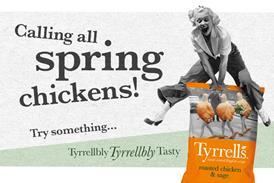
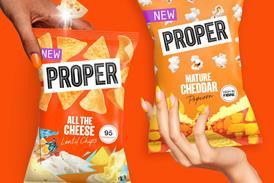

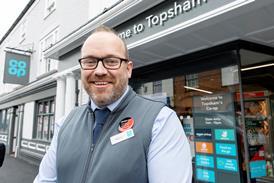
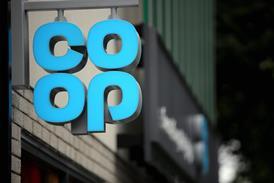
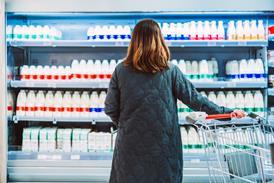

![WG-4003[58]](https://d2dyh47stel7w4.cloudfront.net/Pictures/274x183/4/5/1/353451_wg400358_6083.jpg)







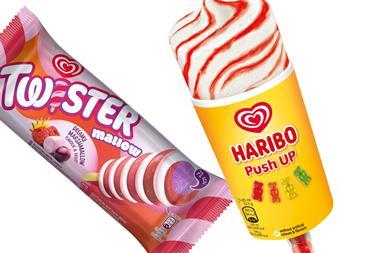


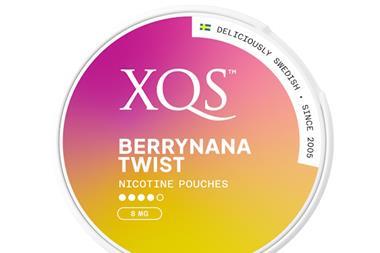
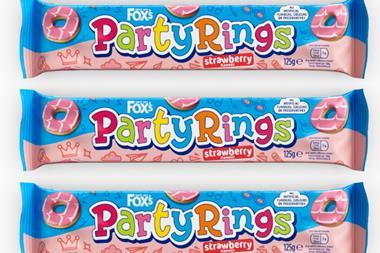
No comments yet